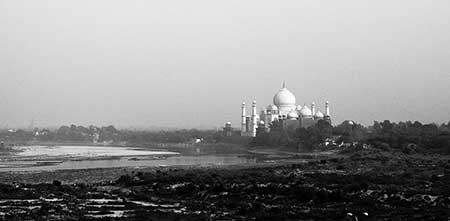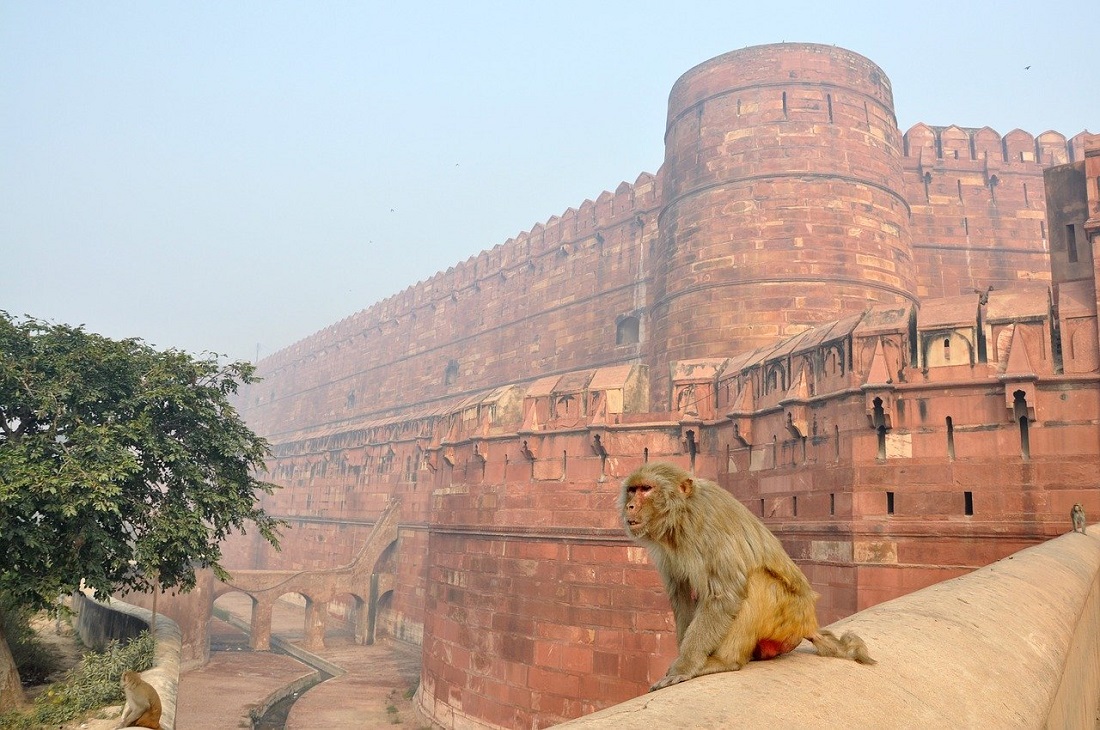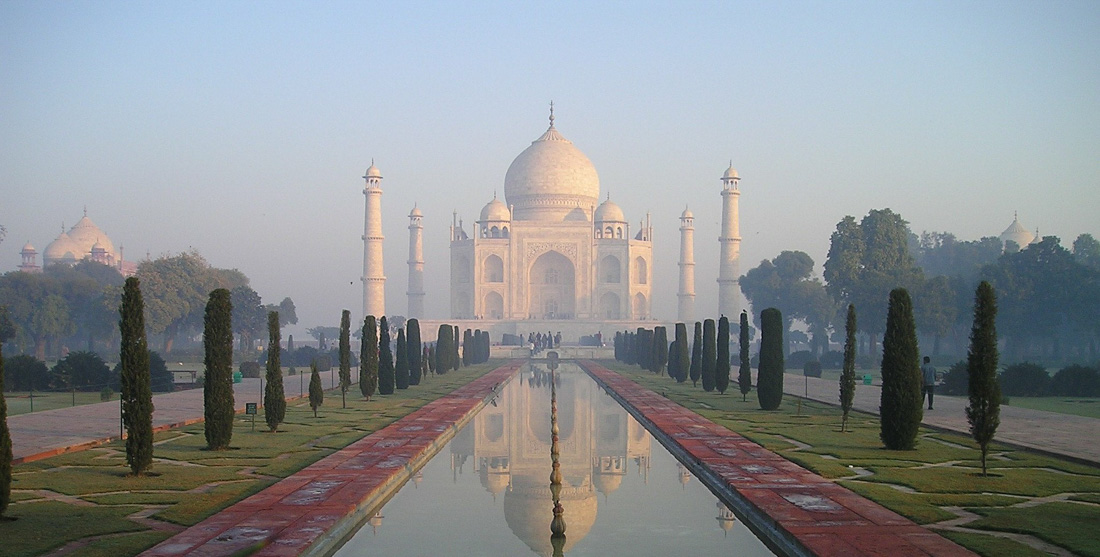There are guides waiting to offer you a tour at every site in Agra. Be cautious, they may not be official guides and are likely to overcharge you. It is probably best to avoid these guides and set up your own ahead of time. For an official guide in any language, go through the approved guides office in Agra.
It's likely that the ultimate reason for your visit is to visit the magnificent Taj Mahal. After all, this is the first of many things to do in Agra, home of the Taj Mahal. When Emperor Shah Jahan lost his favorite wife he wanted to create a monument to her - a monument displaying his love for her. Built of white marble between 1631 and 1648, today it is one of the most well preserved and beautiful tombs in the world. Photos do not do this celebration of woman enough justice. You must see it with your own eyes.
When you do visit, note that the grounds are open from 6:00 am to sunset except on Fridays and during the Ramadan months. Be sure to get there early to beat the crowds - crowds that are larger on the weekends. No matter the time of day, however, prepare yourself to be surrounded by people. Try to carry some sort of light with you as the inside is rather dark, but beautifully decorated with gems. You won't want to miss that. Night viewing sessions are available when the moon is full. Also, remember to bring your bug spray.
Once you have properly seen the natural wonder of the Taj Mahal, make your way to the Agra Fort. Constructed by Emperor Akbar between 1565 to 1571, this fort stood to protect the city and assert the Emperor's power. Later Emperor Shah Jahan added to it, which is ironic as he was later imprisoned there - with a fantastic view of his Taj Mahal.
For a bit more of the natural beauty of Agra, visit the botanical gardens of Mehtab Bagh. You can walk along the gorgeous, native plants and still get a great view of the Taj Mahal. Head to the beaches for the best and most unique view - including a view with the reflecting river.
For another unique mausoleum, go and see the Sikandra. This is the Tomb of Akbar, and it has his touch all over it. At the center of a large garden four red sandstone gates lead to the tomb. One gate is muslim, one is Hindu, one is Christian and one is Akbar's own mixture of faiths.
Not far away is Fatehpur Sikri, the "City of Victory," known as a historic capital of the Mughal Empire. It is worth visiting if you're in the area.
Other than the main sights of the Taj Mahal and the Agra fort, many visitors choose to see the town on a rickshaw tour. This can give you a close up glimpse of Indian culture outside of some of the much larger cities.
Food tours are also available.
The Taj Mahotsav festival is held every year in February or March, and celebrates local arts, crafts, culture, music, food, and more.
Local tours that last a few hours can be a great way to explore Agra. Prices vary by the type of activity or tour, the dates, and the size of the group. Here are a few of the highest rated tours by previous visitors:
- From Delhi Taj Mahal & Agra Full Day Tour By Private Car for $12 details
- Private Tour of Taj mahal from Delhi by Train in 90 Min for $70 details
- Private Agra Tour to TajMahal from Delhi by Car for $27 details
Outlined below are some typical prices for entry fees and activities in Agra. They have been reported from the expenses of previous travelers. These costs provide an idea of what you might need to spend, though your individual expenses will depend on the activities you participate in, the places you visit, and how often you choose budget-friendly or free activities.
 The view of the Taj Mahal from Agra Fort, Agra, India
The view of the Taj Mahal from Agra Fort, Agra, India



 Budget Your Trip is all about finding out how much everything costs so that you can travel cheaper and longer. Created by avid travelers Laurie and Bryan, our goal is to help you plan your next trip on the right budget. With average daily travel costs that are calculated from the budgets of real travelers, plus an analysis of hotel and tour prices, you can find out how much money you need to plan your next adventure. We also have plenty of travel advice, accommodation reviews, and activity suggestions.
Budget Your Trip is all about finding out how much everything costs so that you can travel cheaper and longer. Created by avid travelers Laurie and Bryan, our goal is to help you plan your next trip on the right budget. With average daily travel costs that are calculated from the budgets of real travelers, plus an analysis of hotel and tour prices, you can find out how much money you need to plan your next adventure. We also have plenty of travel advice, accommodation reviews, and activity suggestions.